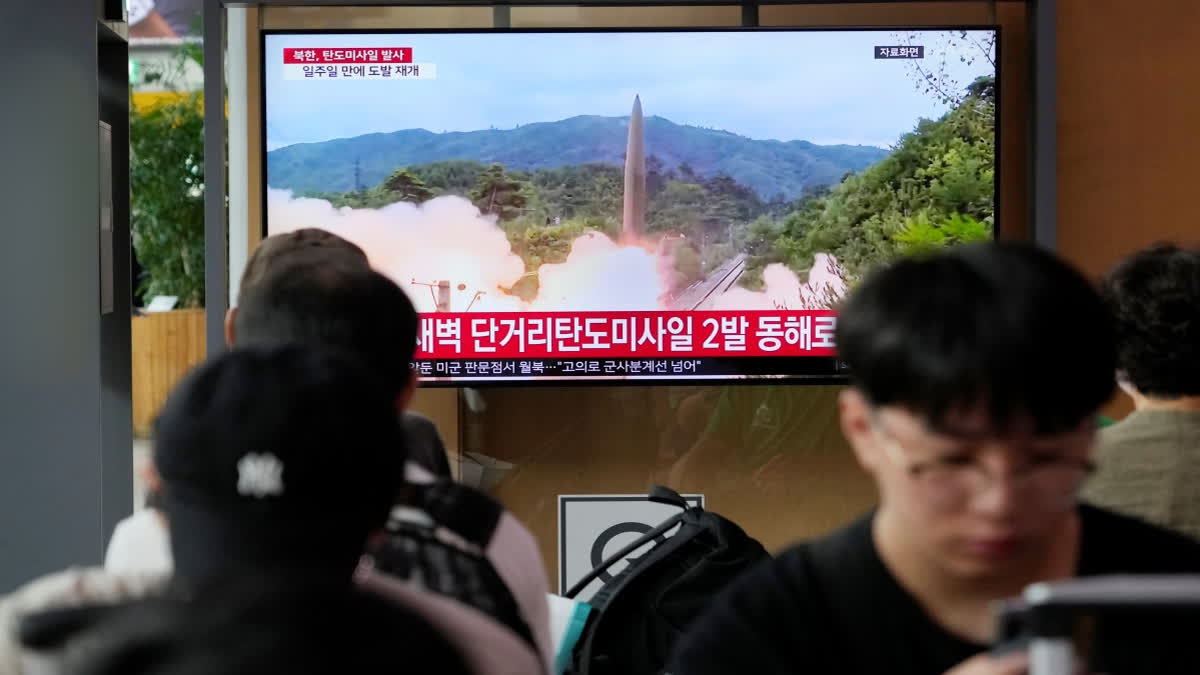Seoul (South Korea): North Korea fired two short-range ballistic missiles into its eastern sea early Wednesday in what appeared to be a statement of defiance as the United States deployed a nuclear-armed submarine to South Korea for the first time in decades. The launches came as the U.S.-led United Nations Command tries to secure the release of a U.S. soldier who fled to North Korea from the South Korean side of a border village Tuesday afternoon.
Private 2nd Class Travis King, in his early 20s, had just been released from a South Korean prison where he was held on assault charges. Instead of getting on a plane to be taken back to Fort Bliss, Texas, he left and joined a tour of the Korean border village of Panmunjom, where he ran across the border, U.S. officials say.
South Korea's Joint Chiefs of Staff said that from 3:30 to 3:46 a.m. North Korea fired two short-range ballistic missiles from an area near capital Pyongyang that flew about 550 kilometers (341 miles) before landing in waters east of the Korean Peninsula. Those flight details were similar to the assessment of the Japanese military, which said the missiles landed outside of Japan's exclusive economic zone and that there were no immediate reports of damage from ships or aircraft in affected areas.
The flight distance of the North Korean missiles roughly matched the distance between Pyongyang and the South Korean port city of Busan, where the USS Kentucky arrived Tuesday afternoon in the first visit by a U.S. nuclear-armed submarine to South Korea since the 1980s. Japanese Defense Minister Yasukazu Hamada told reporters that the North Korean missiles traveled on a low trajectory, with their maximum altitude reaching about 50 kilometers (31 miles), and possibly demonstrated "irregular maneuver" in flight.
Japan has previously used similar language to describe the flight characteristics of a North Korean weapon modeled after Russia's Iskander missile, which travels at low altitudes and is designed to be maneuverable in flight to improve its chances of evading missile defenses. The South Korean Joint Chiefs of Staff condemned the North Korean launches as "major provocation" that threatens peace and stability in the region and said the South Korean and U.S. militaries were closely monitoring the North for further weapons activities.
Wednesday's launches marked the North's first ballistic activity since July 12, when it flight-tested a new solid-fuel intercontinental ballistic missile that demonstrated potential range to reach deep into the U.S. mainland. That launch was supervised by the country's authoritarian leader Kim Jong Un, who vowed to further bolster his country's nuclear fighting capabilities in the face of expanding U.S.-South Korean military activities, which he blamed for worsening the security environment on the Korean Peninsula.
Tensions have rose in the region in recent months as the pace of both North Korean weapons tests and U.S.-South Korean joint military drills have increased in a cycle of tit-for-tat.
